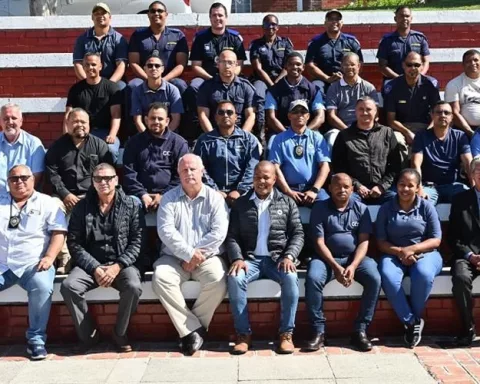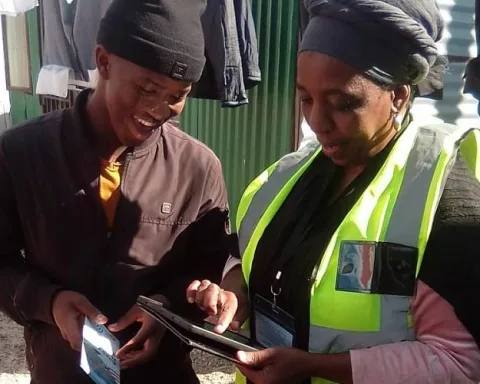South Africa’s National Labour Migration Policy seeks to harmonize the expectations of the populace, labour market demands, migrant worker protection, and regional integration. The policy has three critical intervention areas, emphasizes collaboration, and aims to address specific issues faced by migrant workers through data collection and analysis. A Labour Migration Policy and Governance dialogue was hosted in Mpumalanga, drawing diverse stakeholders from various sectors, and the Department of Employment and Labour is committed to developing a well-informed NLMP that addresses concerns and benefits all parties involved.
What is the National Labour Migration Policy in South Africa?
The National Labour Migration Policy (NLMP) seeks to harmonize the expectations of the South African populace, labour market demands, migrant worker protection, and the imperatives of regional integration and collaboration. The NLMP has three critical intervention areas: labour migration governance and management, labour migration data, and labour migration to and from South Africa. It emphasizes collaboration and coordination, dismantling historical inequalities, and addressing specific issues faced by migrant workers through data collection and analysis.
Deliberating on the National Labour Migration Policy in South Africa
The Department of Employment and Labour hosted a Labour Migration Policy and Governance dialogue on 26th October 2023 in White River, [Mpumalanga](https://capetown.today/minister-thembi-nkadimeng-leads-ddm-ministerial-outreach-in-mpumalanga/), drawing a large number of stakeholders from various sectors. Mandla Sibanyoni, Chief Director of Provincial Operations, applauded the diverse participation, stressing the significance of incorporating different perspectives in policy formulation.
Sam Morotoba, the Acting Director-General of the Department, provided an in-depth explanation of the National Labour Migration Policy (NLMP) and its objectives during the event. He remarked that the policy seeks to harmonize the expectations of the South African populace, labour market demands, migrant worker protection and their families, and the imperatives of regional integration and collaboration.
Tracing South Africa’s labour migration history, Morotoba explained how the apartheid-era ‘Two Gate Policy’ had laid the groundwork for current labour migration patterns. This dual approach entailed oppressive measures such as livestock taxation, forcing Africans to work in mines and emerging industries, and agreements with neighbouring countries for a supply of inexpensive labour, primarily for mining regions.
Towards a Collaborative Approach in Labour Migration Governance
Morotoba noted that the genesis of the NLMP could be traced back to 2015, following a resolution by the Southern African Development Community (SADC) Ministers of Labour and Social Affairs to synchronize migration policies within the sub-region. The policy focuses on three critical intervention areas: labour migration governance and management, labour migration data, and labour migration to and from South Africa.
There have been 33 public hearings conducted across all provinces since the draft policy was released for public comments on 29 February 2022, and it has been presented in SADC structures as a progress report among member states. This comprehensive consultation process demonstrates the South African government’s dedication to developing a well-informed NLMP that addresses stakeholders’ concerns.
Implementing the NLMP offers significant potential for South Africa and the broader SADC region. By establishing a thorough policy framework that caters to labour market needs and safeguards migrant workers’ rights, South Africa can contribute to regional integration and collaboration. This is especially pertinent in a globalized world where countries are increasingly linked through trade, investment, and migration.
Addressing Historical Inequalities and Enhancing Cooperation
Recognizing and addressing the historical context of labour migration in South Africa, the NLMP has the potential to create a more equitable and fair labour market by dismantling the remnants of the ‘Two Gate Policy’ and ensuring that labour migration is governed by principles of fairness, transparency, and inclusivity.
A pivotal aspect of the NLMP is its emphasis on data collection and analysis. Access to accurate labour migration data enables policymakers to make informed decisions, develop targeted interventions, and address specific issues faced by migrant workers. Furthermore, reliable and current data can help dispel misconceptions and stereotypes surrounding labour migration, promoting evidence-based and rational discussions on the matter.
Emphasizing collaboration and coordination, both within South Africa and across the SADC region, is another critical component of the NLMP. By partnering with key stakeholders such as the private sector, civil society, and regional partners, the Department of Employment and Labour aims to establish a coherent and effective policy framework that benefits all parties involved. Such collaborative efforts are crucial for tackling the complex and multi-layered issue of labour migration and ensuring a sustainable and prosperous future for South Africa and the SADC region.
The Labour Migration Policy and Governance dialogue in Mpumalanga signifies a major step forward in the development and implementation of the NLMP. The diverse participation, engaging discussions, and strong commitment from the Department of Employment and Labour underscore the importance of labour migration policy in South Africa’s broader socio-economic context. By maintaining stakeholder engagement and adopting a comprehensive, evidence-based approach, the South African government can ensure the successful development and implementation of the NLMP, ultimately benefiting the nation’s labour market, migrant workers, and regional integration initiatives.
1. What is the National Labour Migration Policy in South Africa?
The National Labour Migration Policy (NLMP) seeks to harmonize the expectations of the South African populace, labour market demands, migrant worker protection, and the imperatives of regional integration and collaboration.
2. What are the critical intervention areas of the NLMP?
The NLMP has three critical intervention areas: labour migration governance and management, labour migration data, and labour migration to and from South Africa.
3. What was the purpose of the Labour Migration Policy and Governance dialogue in Mpumalanga?
The Labour Migration Policy and Governance dialogue in Mpumalanga aimed to draw diverse stakeholders from various sectors to discuss and deliberate on the NLMP.
4. What is the Department of Employment and Labour’s commitment towards the NLMP?
The Department of Employment and Labour is committed to developing a well-informed NLMP that addresses concerns and benefits all parties involved.
5. What is the historical context of labour migration in South Africa?
The apartheid-era ‘Two Gate Policy’ had laid the groundwork for current labour migration patterns. This dual approach entailed oppressive measures such as livestock taxation, forcing Africans to work in mines and emerging industries, and agreements with neighbouring countries for a supply of inexpensive labour, primarily for mining regions.
6. Why is data collection and analysis important in the NLMP?
Access to accurate labour migration data enables policymakers to make informed decisions, develop targeted interventions, and address specific issues faced by migrant workers.
7. What is the significance of collaboration and coordination in the NLMP?
Emphasizing collaboration and coordination, both within South Africa and across the SADC region, is a critical component of the NLMP. By partnering with key stakeholders such as the private sector, civil society, and regional partners, the Department of Employment and Labour aims to establish a coherent and effective policy framework that benefits all parties involved.
8. What potential benefits can the NLMP offer for South Africa and the SADC region?
Implementing the NLMP offers significant potential for South Africa and the broader SADC region. By establishing a thorough policy framework that caters to labour market needs and safeguards migrant workers’ rights, South Africa can contribute to regional integration and collaboration.








